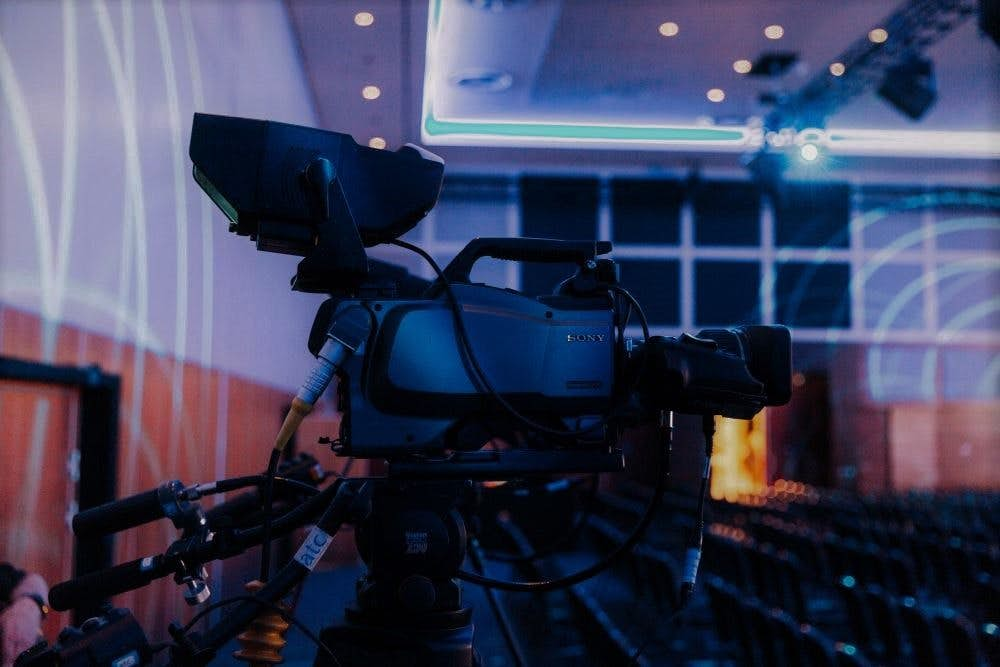Throughout the Coronavirus pandemic, there’s been a widespread surge in the adoption of different technologies enabling event organisers to facilitate events during lockdowns and beyond. Most of the equipment and services being used aren’t new. But COVID-19 has put them centre stage and shone a light on the benefits that technologies such as live streaming and web conferencing can bring – things like extended reach, reduced travel, increased presenter availability and hyper tailored experiences for attendees.
In the same way that agile working has fast become a new norm, remote presenters and delegates will continue to be a part of events long after COVID-19. But this shift towards a more technological approach for event delivery can be overwhelming, with lots of unfamiliar terminology to navigate.
To help break things down, we’ve asked technical solutions specialist, White Light, to produce this guide to digital event technology. Having just celebrated its 50th anniversary, White Light has been at the forefront of digital events for many years and has delivered hundreds of live-streamed events across its portfolio. So, they know what they’re talking about!
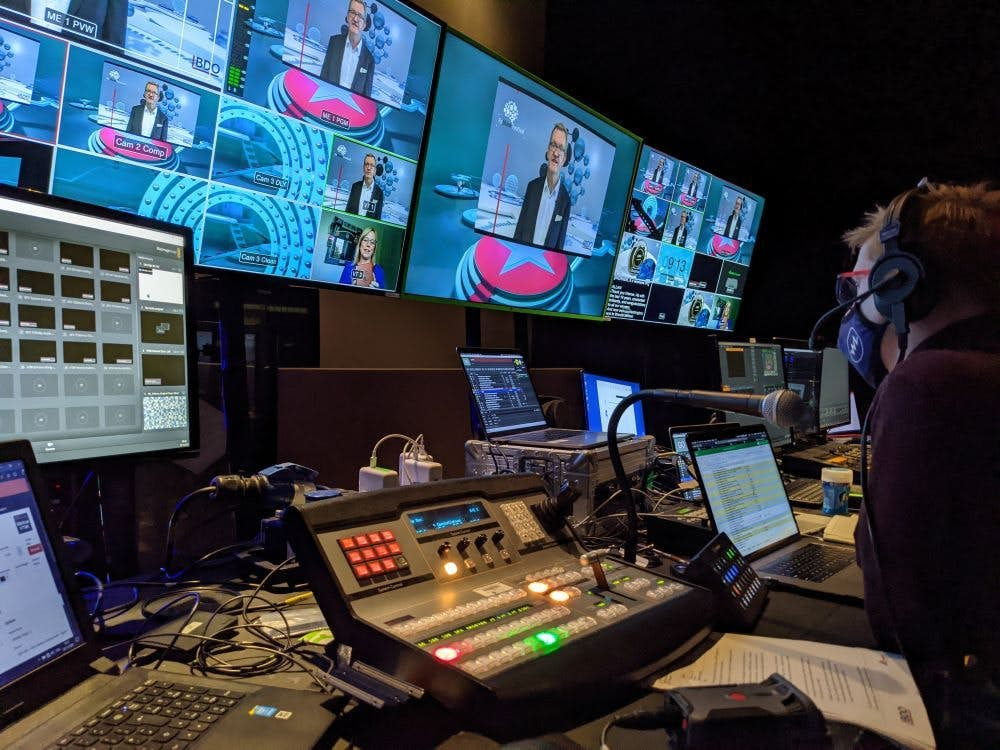
Jargon Buster
When it comes to event production, there’s an array of jargon and terms that often mean more than one thing. And often, these terms can make things sound more complex than they really are! To help decode things for you, here’s a quick reference guide to some of the most common terms you’ll encounter.
Video Conferencing
Video conferencing is the use of a variety of cameras, encoders and display equipment to allow two or more people to chat in real time. One individual personally ‘calls’ the other.
Traditionally expensive and requiring a lot of equipment, this service has now largely been superseded by web conferencing.
Web Conferencing
Web conferencing is the use of a computer and associated equipment to allow two or more people to chat in real time.
There’s a range of different platforms to choose from, such as Zoom, Microsoft Teams, GoToMeeting, Google Meet and BlueJeans. These platforms allow for screen sharing of content and recording of the call (however, these features are sometimes only available with premium accounts).
Modern web conferencing does not require anything more than a laptop and web browser and enables people to join remotely, via a number of methods.
Live or Web Streaming
Live or web streaming involves using equipment to encode a video and audio signal, so that they can be transmitted via the internet and viewed as part of a website. This is a one-to-many solution, which means the host site streams to many viewers.
Content Delivery Network (CDN)
A CDN is the system used to host a live stream video.
When live first streaming started, this had to be rented and configured prior to use and it was a very expensive process, requiring users to know the number of participants in advance. Modern CDNs are easy to configure and scale their bandwidth based on the number of users. Here are a few examples:
- YouTube and Facebook Live. These are both free to use, but for that reason, they only offer public streams and limited support.
- Vimeo. Paid on a subscription license (which can be covered by White Light), this offers a simple and clean player that can be embedded in a website easily.
- Microsoft Stream. Part of the Microsoft Teams suite of software, this is Microsoft’s CDN product. Its main USP is that it integrates in enterprise IT.
These examples are just the tip of the iceberg and there are many more to choose from.
Microsite
A microsite is a small website built to host the content for an event. It’s usually utilised by clients who require a separate website dedicated just to the event stream.
Stream content can include:
- Delegate registration
- Q&A
- Polling
Platform
A virtual event platform is an integrated service offering a complete solution for your remote delegates. This often includes pre-event communication, dedicated brandable event ‘spaces’, trade shows and exhibitions and much more.
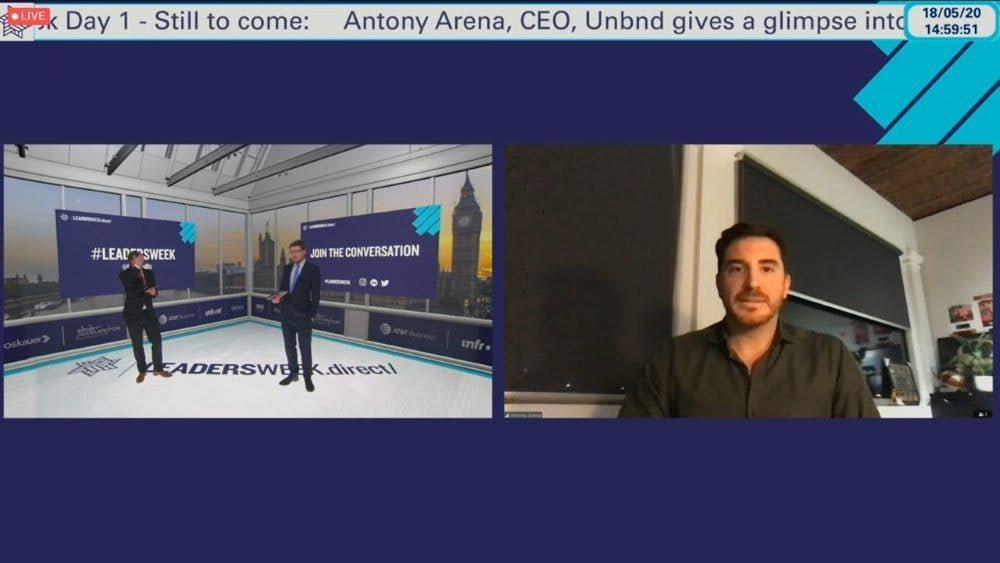
Redundancy
Redundancy is the use of multiple systems or connections simultaneously so that if one element fails, the operator can switch to another. This helps prevent or minimise a break in service. For example, a backup laptop running the same presentation with a switcher would be referred to as a redundant system.
Bandwidth
Bandwidth refers to the speed of internet available. For streaming, we require a minimum of 20 megabits per second (Mbps) for download and upload. While 20mb download speeds are common, upload speeds can be significantly less so it’s important to check them. The most robust and reliable provision is a wired connection.
Video on Demand (VoD)
VoD is video that can be streamed at your users’ preferred time and convenience (similar to Netflix or Amazon Prime!). Content can be recorded during a live stream and then made available afterwards for future viewing. This also gives flexibility for video content to be edited, for example into different sessions, and then hosted for a fixed period.
Webinar
A webinar is an online educational presentation usually used to educate attendees about a specific topic. There are a variety of different platforms that offer this virtual event format, including Microsoft Teams and Zoom. Webinars allow delegates to join a ‘call’ and participate passively, meaning that their cameras and microphones are disabled and they can usually only communicate with the presenters via the chat function.
Presenters share content either via video or make their presentation viewable via the screen share function. Many platforms enable a panel of presenters to interact with each other and for delegates to also participate as panellists if required.
Digital or Virtual Events
A digital or virtual event is an event that is consumed entirely online, with contributors and presenters remotely connected to the stream via web conference.
A host might be based at home or in a physical studio location to help anchor the set-up and control the flow of the event. All delegates ‘attend’ the event via a stream and are often passive.
Hybrid Events
Hybrid events are events that include both a virtual and in-person element. Usually, they’ll work similar to virtual events but with a live audience also physically in attendance. The event takes place at a venue with a live audience and then additional delegates join the stream remotely.
Although the terminology is new, this was the most common format for live-streamed events prior to COVID-19.
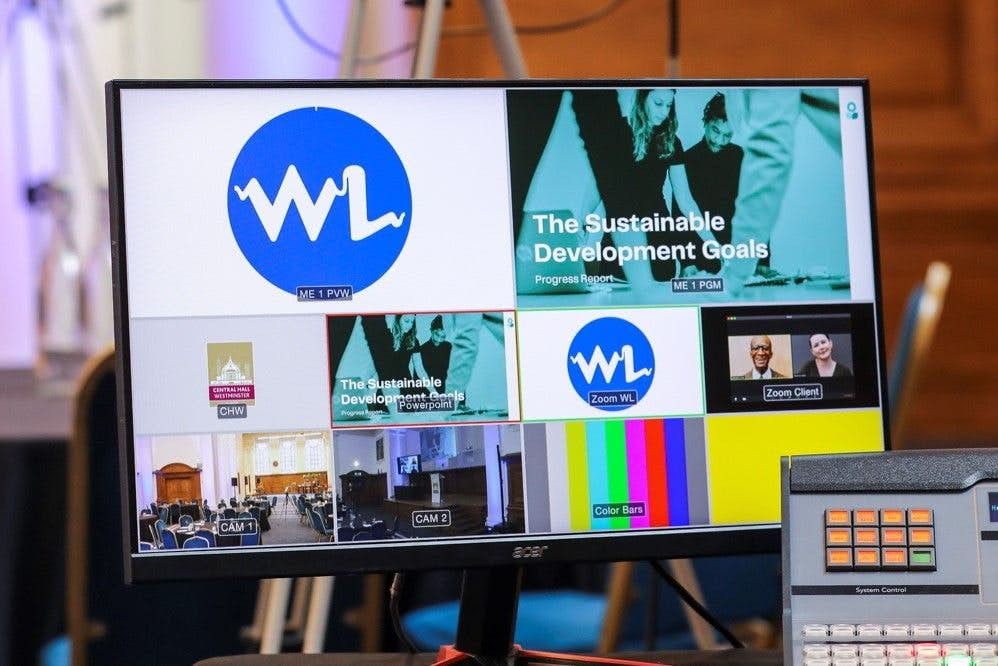
How it Works
Regardless of your choice of platform or CDN, digital events all need solutions to facilitate three key elements:
- Content
- Encoding and streaming
- Delivery
In some cases, the same software may be able to facilitate more than one of these areas. For example, a web conference could fulfil both the encoding and delivery elements of your event.
Content
Some form of device is required to capture your content – this could be as simple as a webcam or smartphone. Larger events would typically have multiple cameras offering a variety of shots from different angles.
Presentations can be delivered live to your virtual attendees in real time, with the help of screen share features. Some software will even allow you to add the presenter to the screen view alongside their presentation as a Picture in Picture (PiP).
Encoding and Streaming
For web conferences and webinars, this can simply be a laptop connected to the internet.
For larger events, or where more redundancy is required, this would typically be handled by one or more dedicated stream ‘engines’ – a clever box that turns audio and video feeds into a stream.
Delivery
This is how your delegates will consume your content. For meetings that require a lot of interaction, this solution could be web conferencing software. If your audience is passive, it’s more likely to be a website with an embedded video player, or a YouTube or Facebook page.
This can be hosted via your main website, on a dedicated microsite, or you can even choose one of White Light’s customisable platforms.
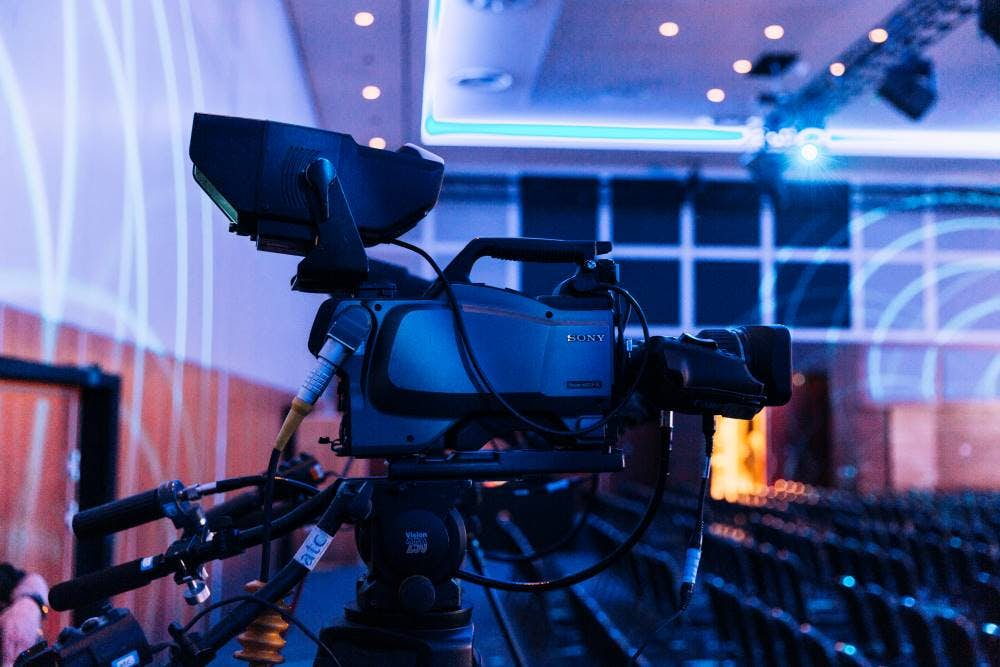
Key Questions to Ask
When you’re considering the technological side of hosting a virtual or hybrid event, there are a number of questions you’ll need to ask yourself to ensure your event can run smoothly. Here are the key ones.
1. Does my venue have the necessary infrastructure to support the event brief?
Web conferencing requires a robust and reliable internet connection. If you’re hosting a hybrid event, you’ll need to ensure that your hybrid event venue can provide this. Most can, but sometimes it will come with an additional cost.
2. Who is my audience?
As with live event planning, careful consideration needs to be given to your audience.
- Are they internal or external? Determining this will allow you to tailor the look and feel of your events accordingly.
- Do they need to interact with your host, presenters and/or, each other?
- Will you be taking questions from the audience? If so, do you want to gather live polling data from them?
- Do you need to be able to see them?
- What percentage of your audience is attending virtually? Should the event itinerary prioritise remote attendees or the live event?
3. Will I need additional content?
Alongside your key presentations, talks and panel discussions, you’ll need to consider whether you need additional content to allow the digital elements of your event to run smoothly. This could include holding slides, microsite branding, or even a bespoke background for your remote presenters.
4. Do I need to allow for rehearsal time?
Some presenters will be less experienced in presenting to a camera. If they’re presenting from home using video conferencing software, they also won’t have access to the ‘speaker ready room’ of your virtual event platform in advance. Having a call with them before they go live in front of your audience might be beneficial.
5. Do I want to utilise the content for any other purposes post-event?
If all your content has been recorded, you could repurpose it after the event for anything from social media content to online archives of events. You could even make the content available to view on demand for individuals who were unable to attend on the day.
We hope that this guide has helped you to understand and consider the wealth of digital event options available, powered by a range of technologies.
To learn more about digital events, check out Hire Space’s complete virtual event guide. Or just get in touch with White Light to discuss your digital event briefs and how White Light can help in more detail.
Author

Imogen Beech
With a love of interior design, Imogen’s writing experience has taken her from the mansions of the rich and famous to the capital’s most unique events spaces on Hire Space.
